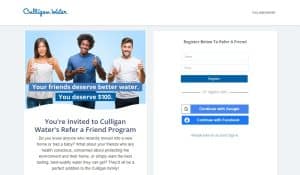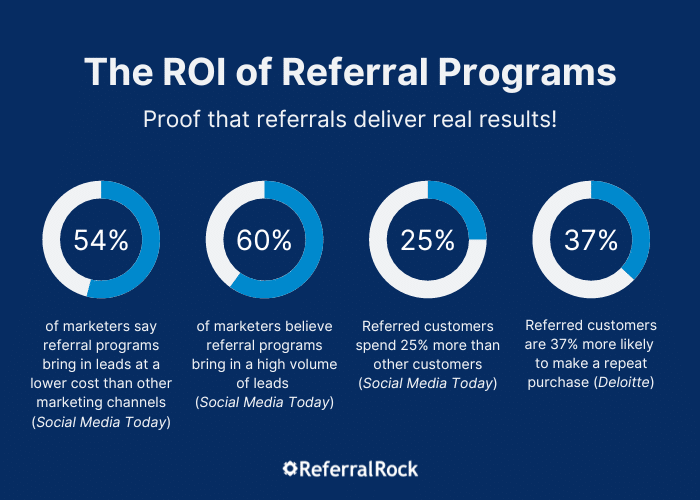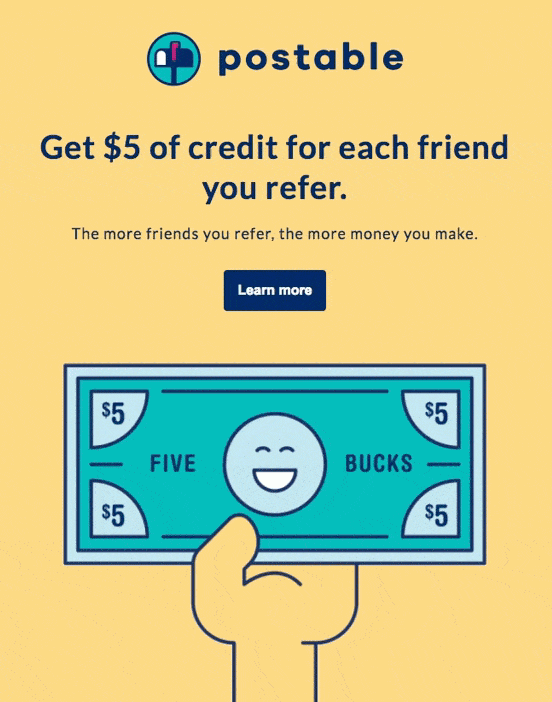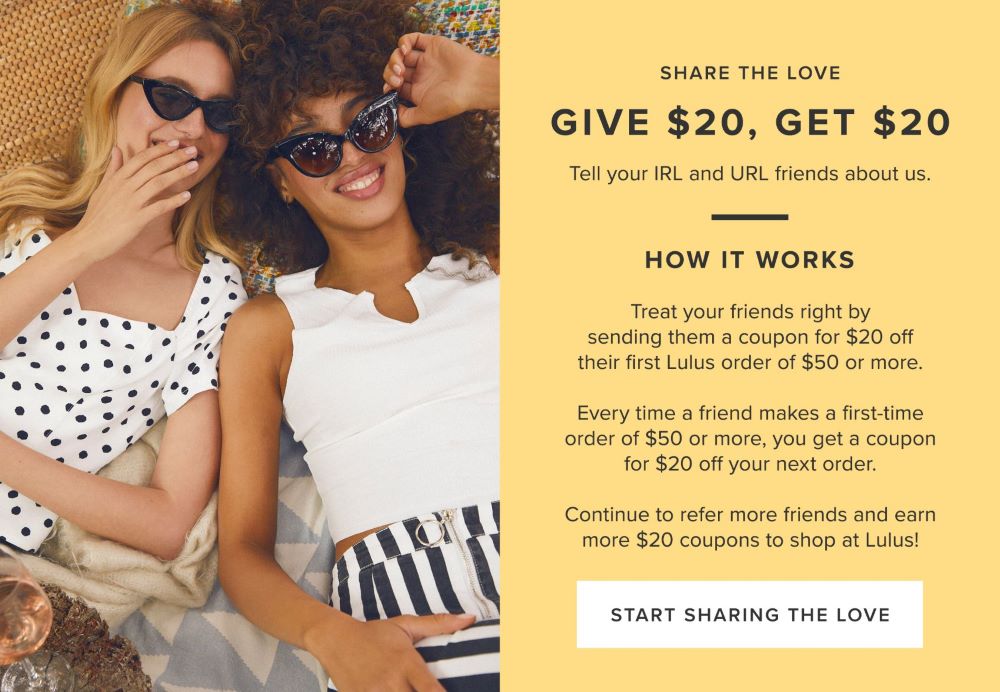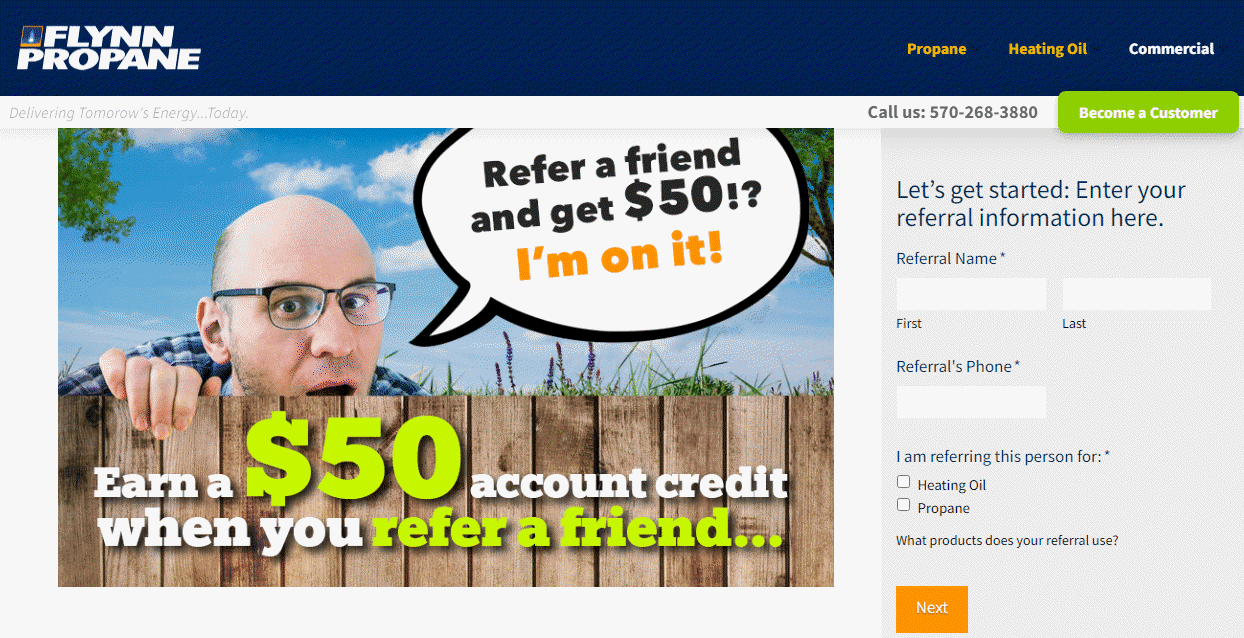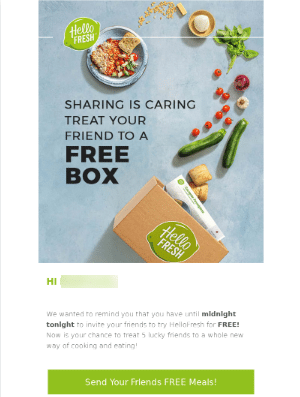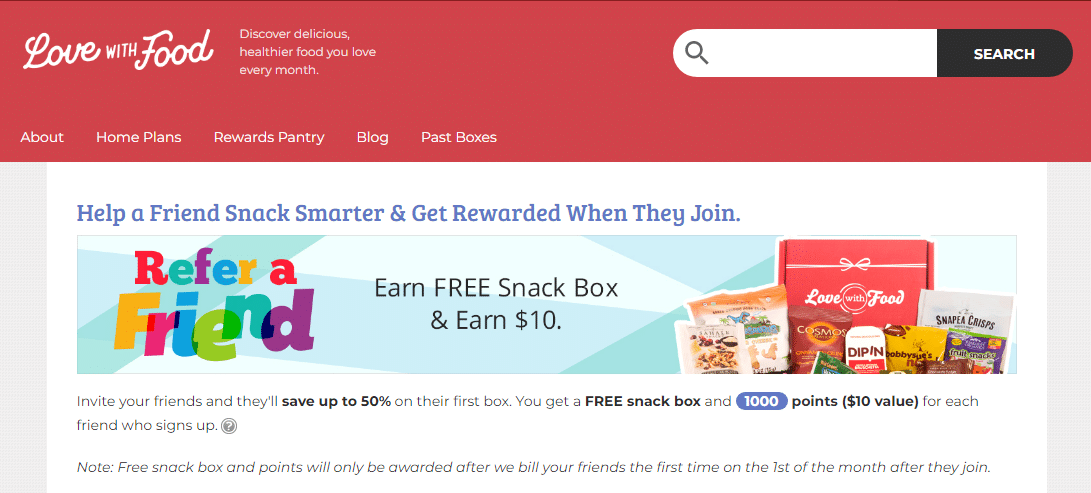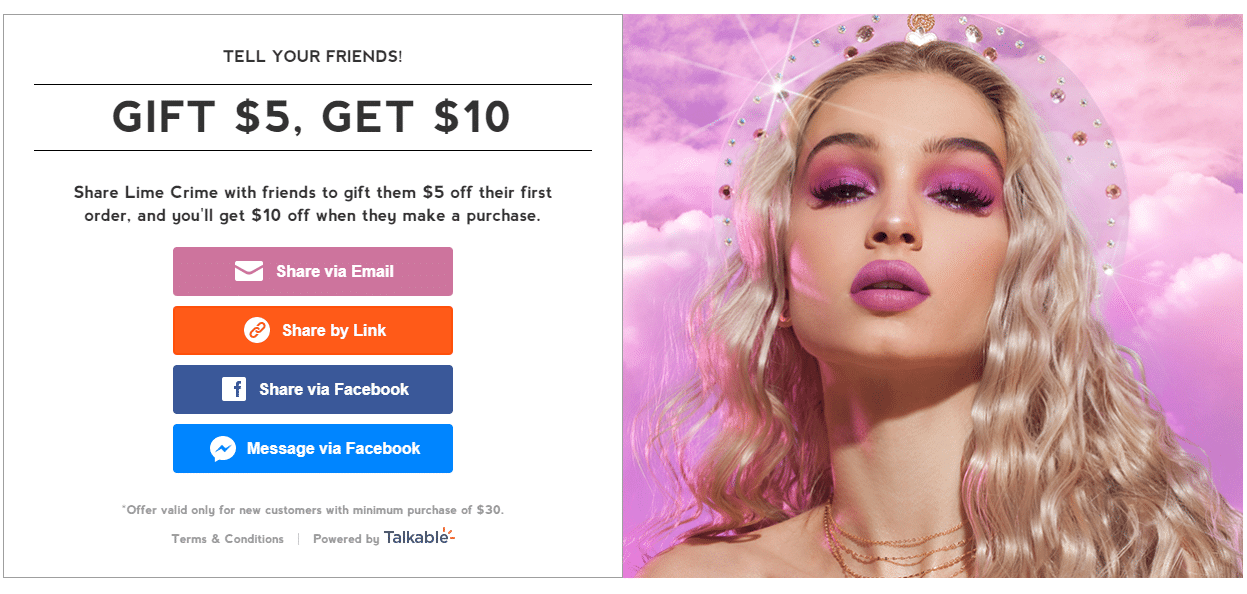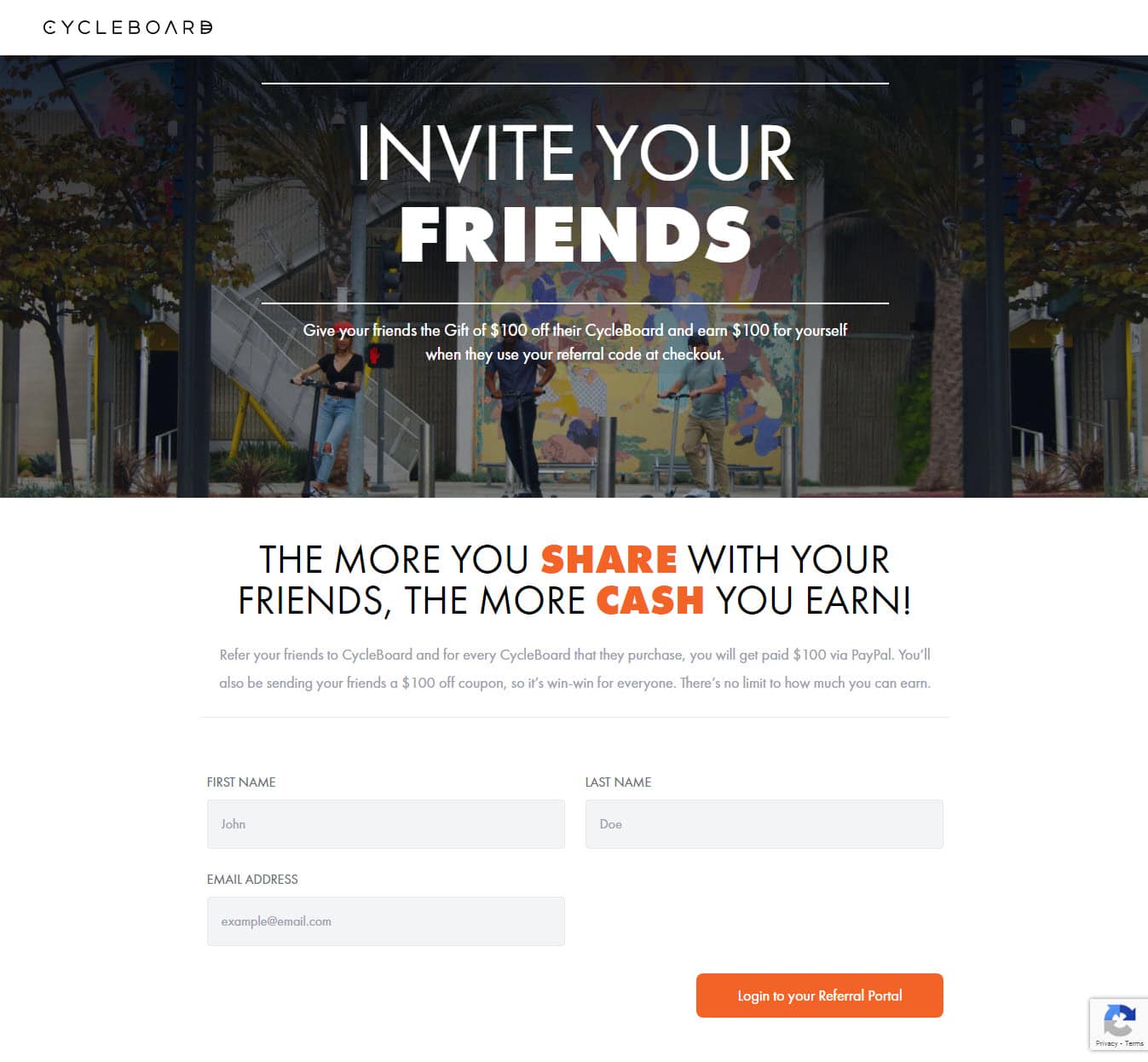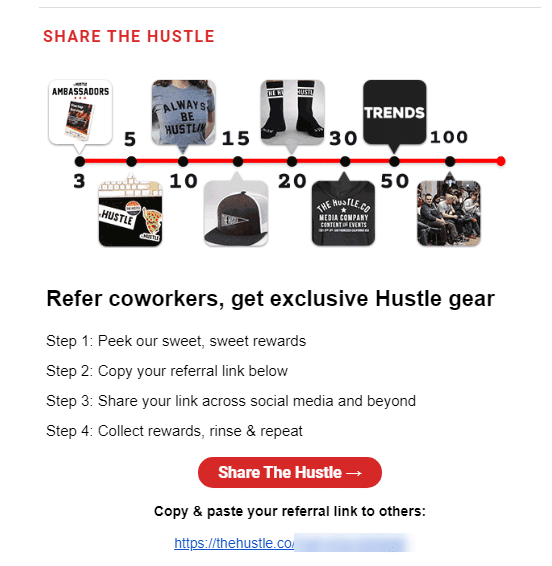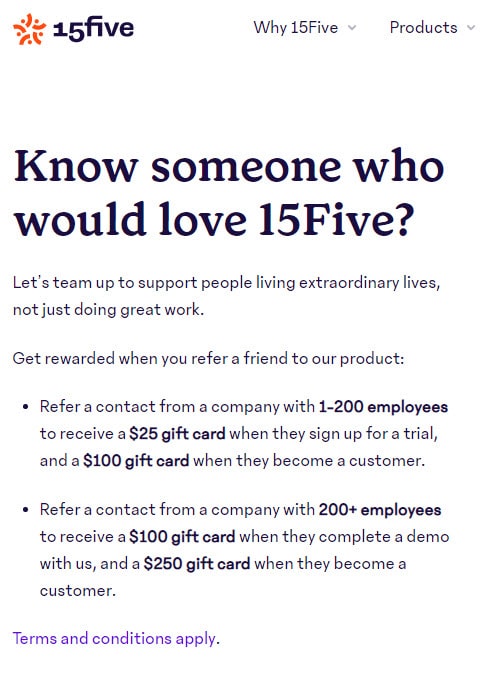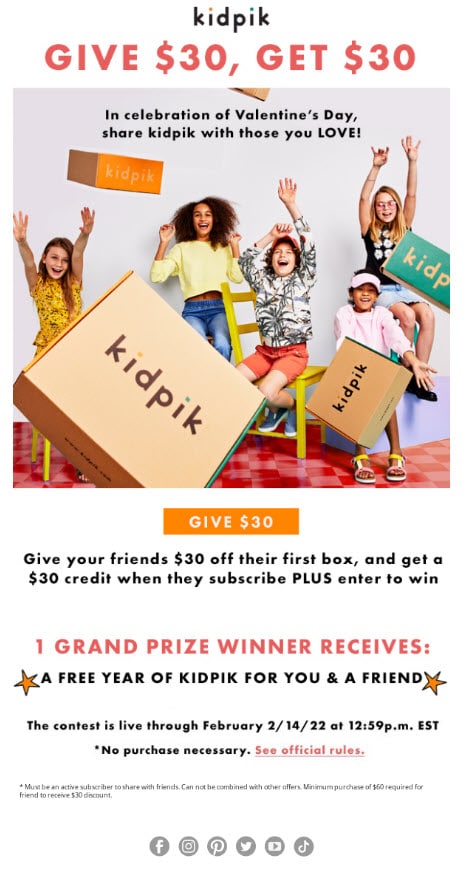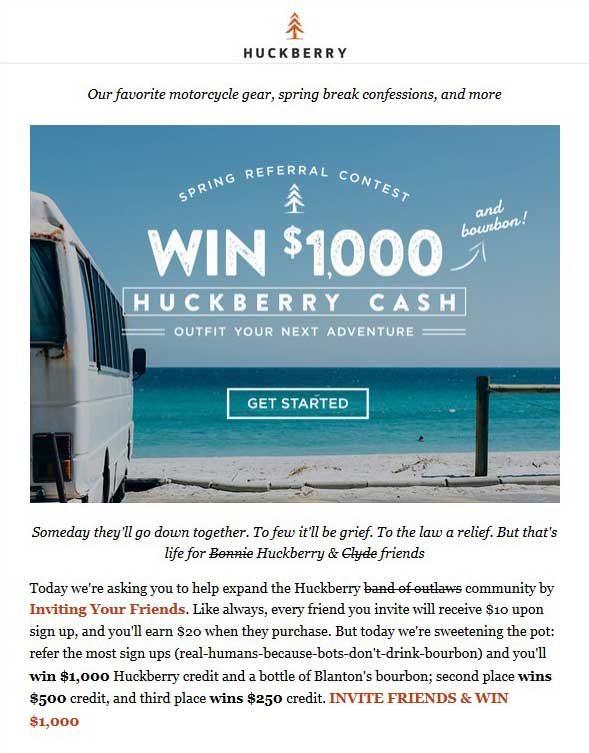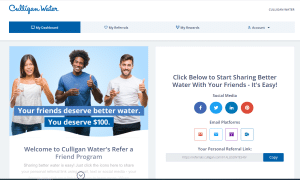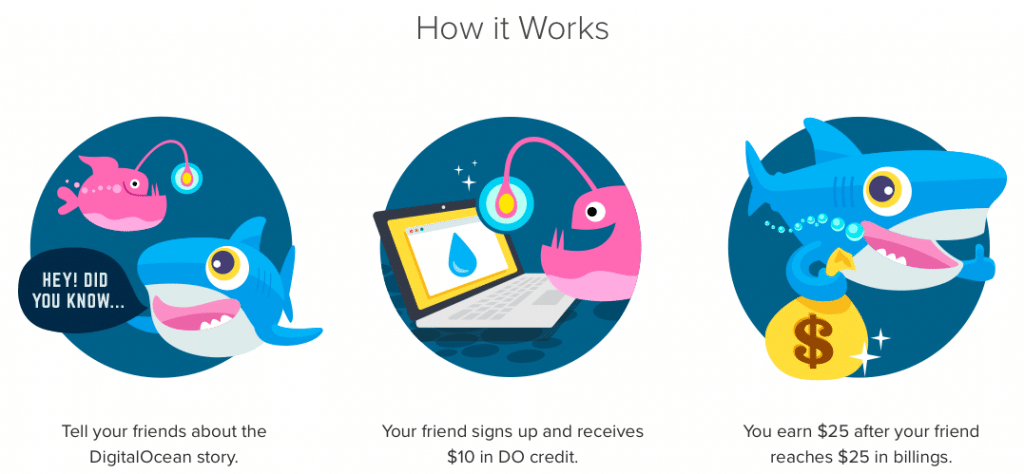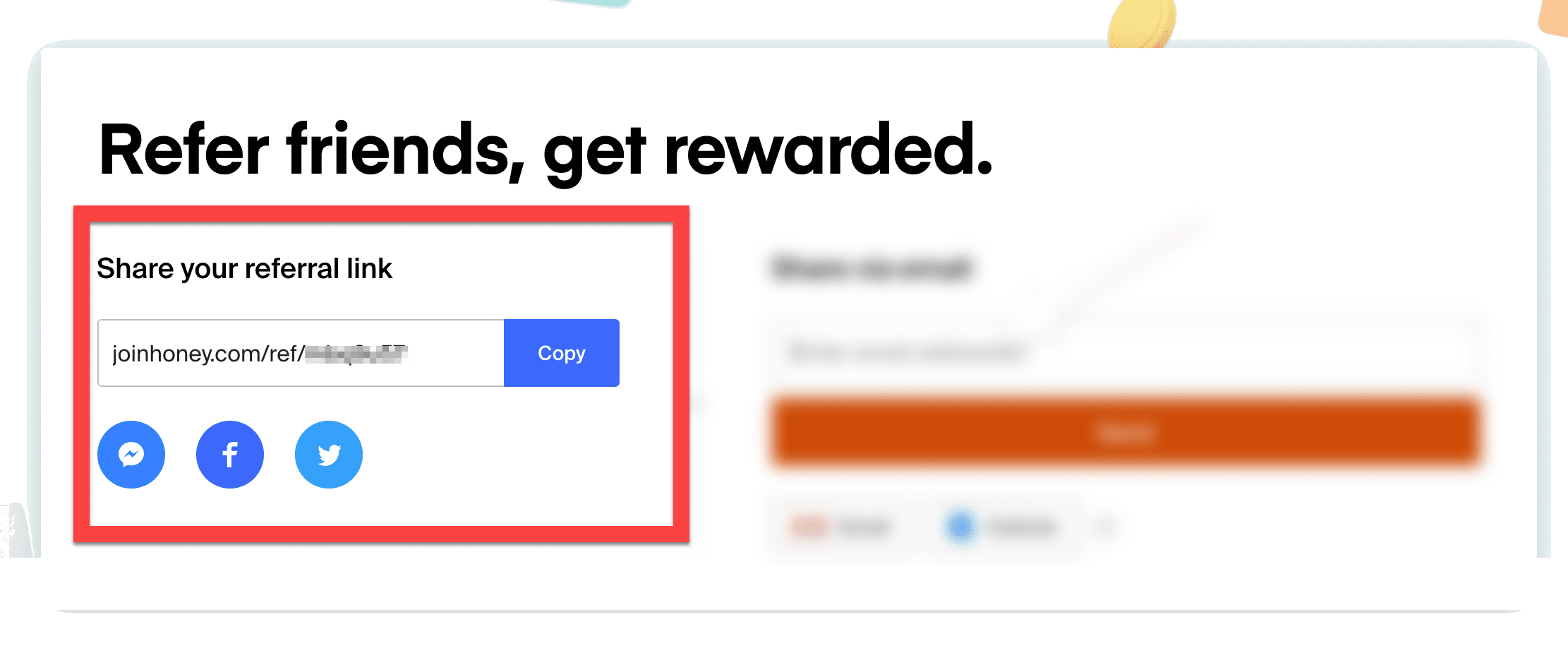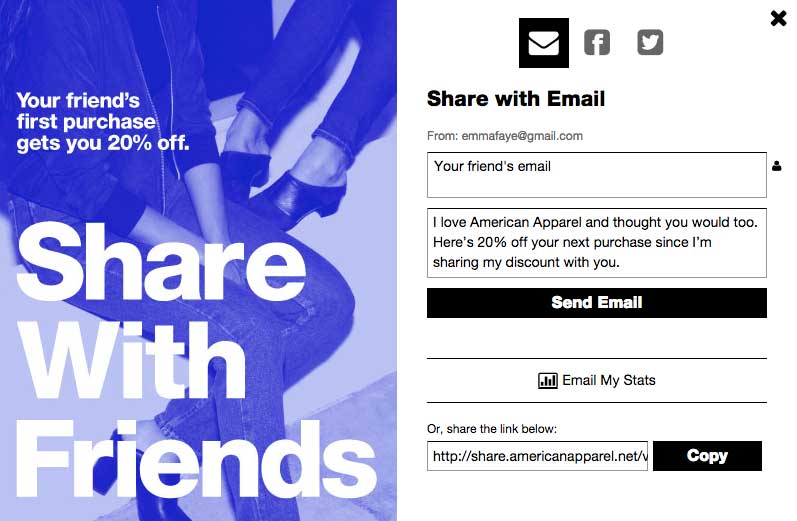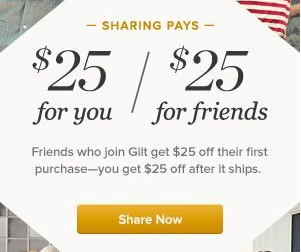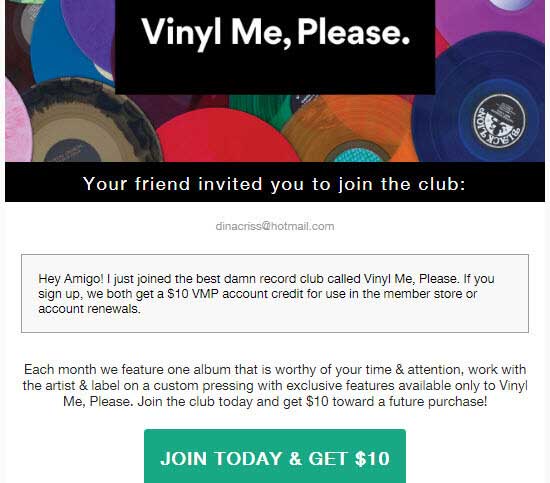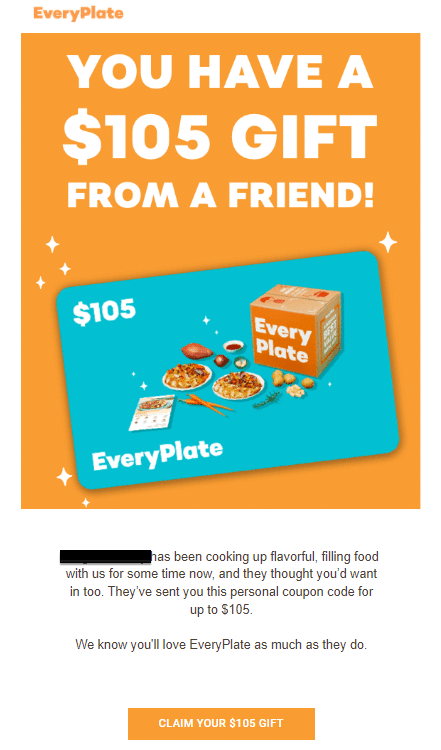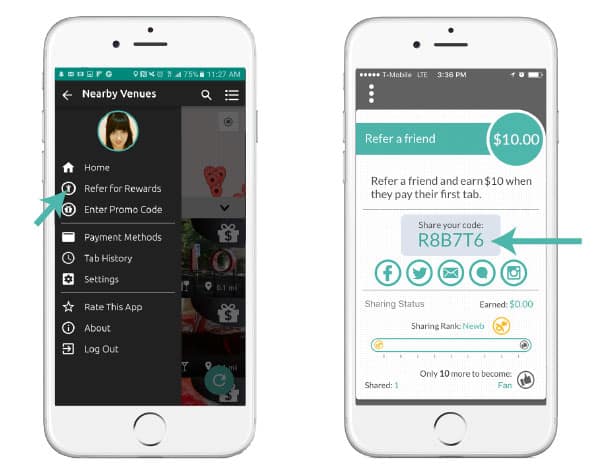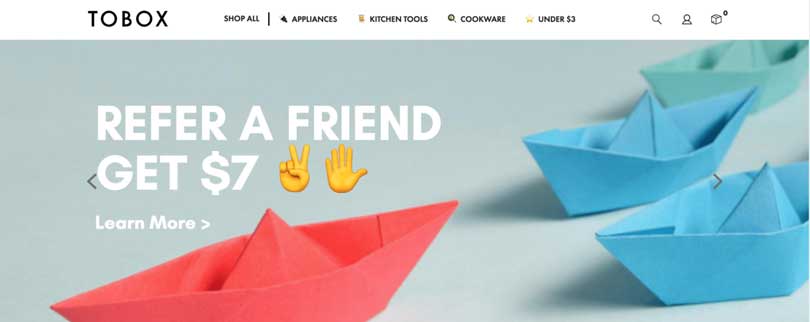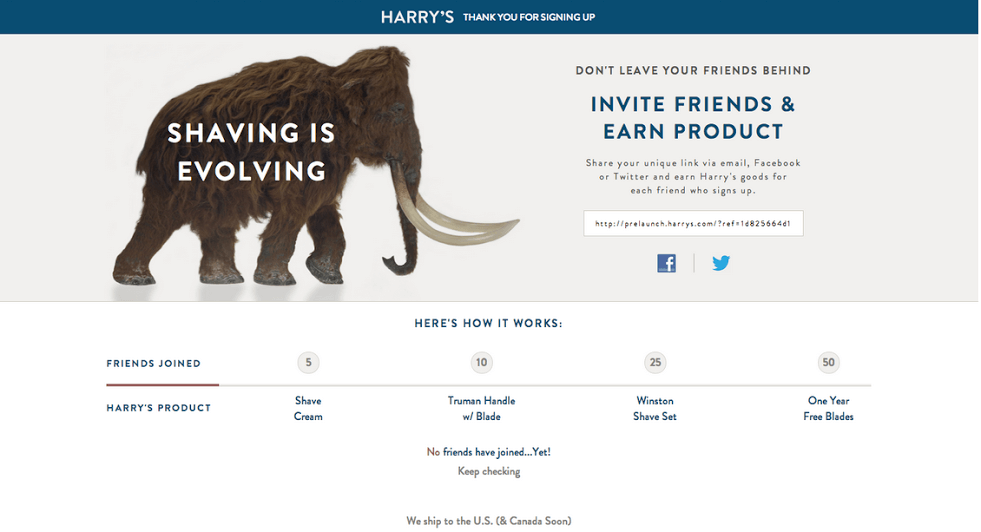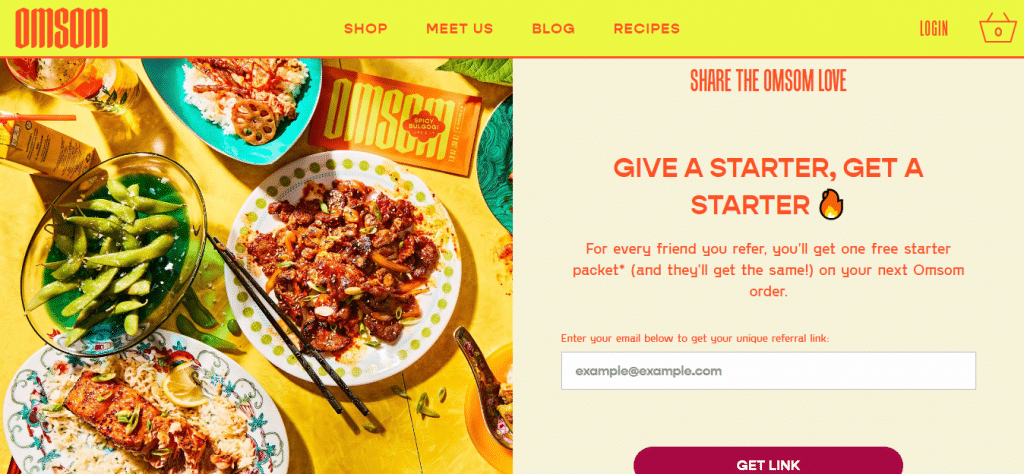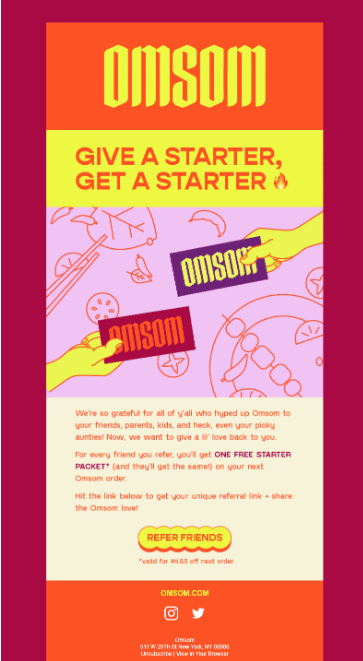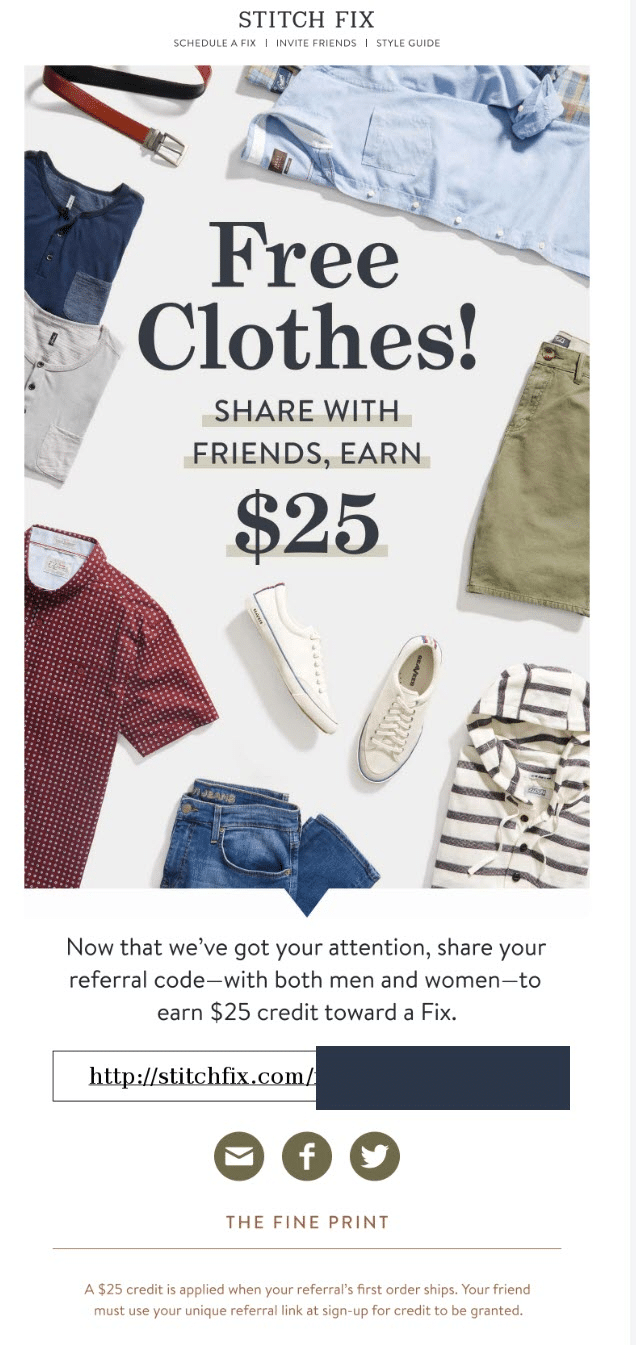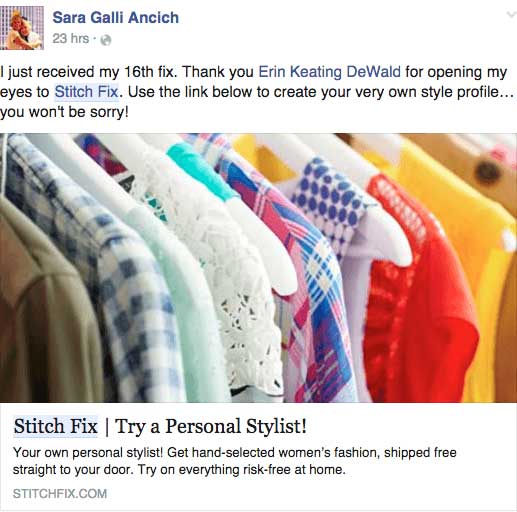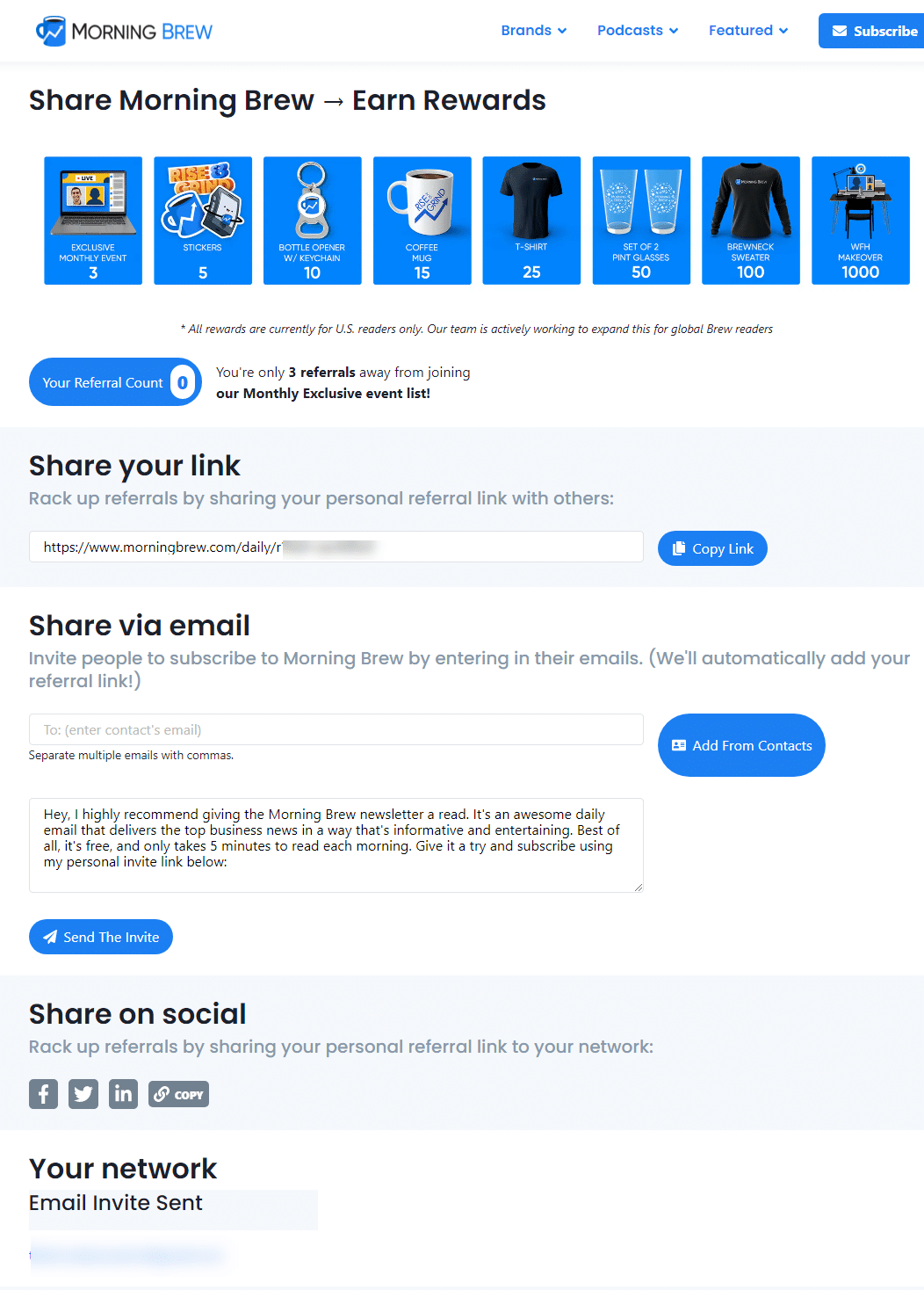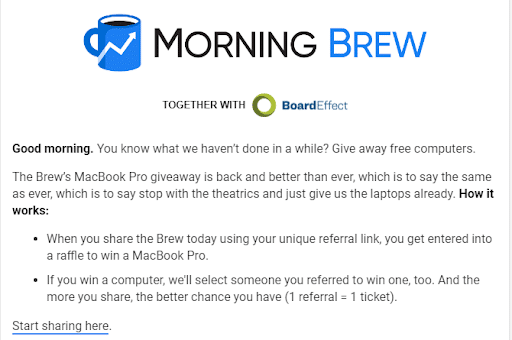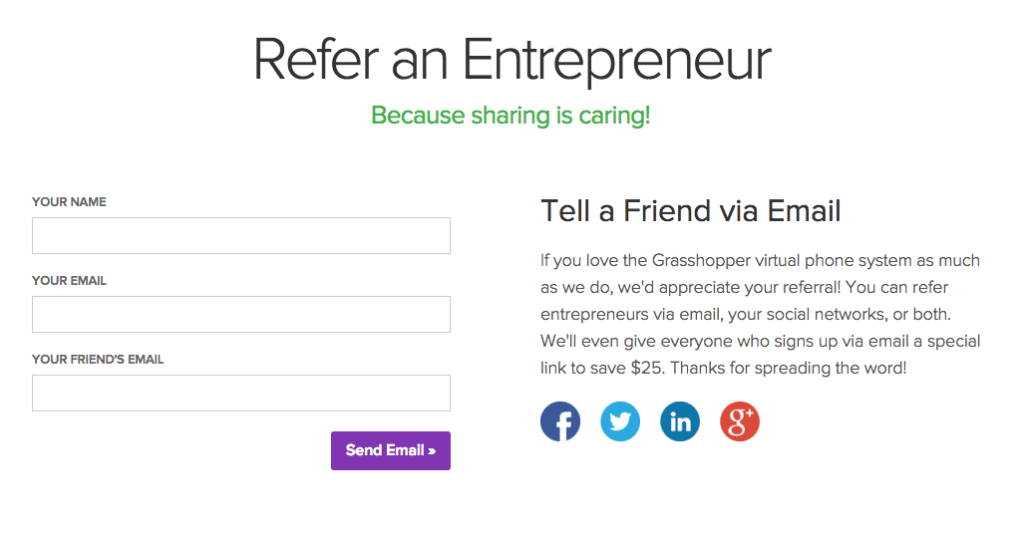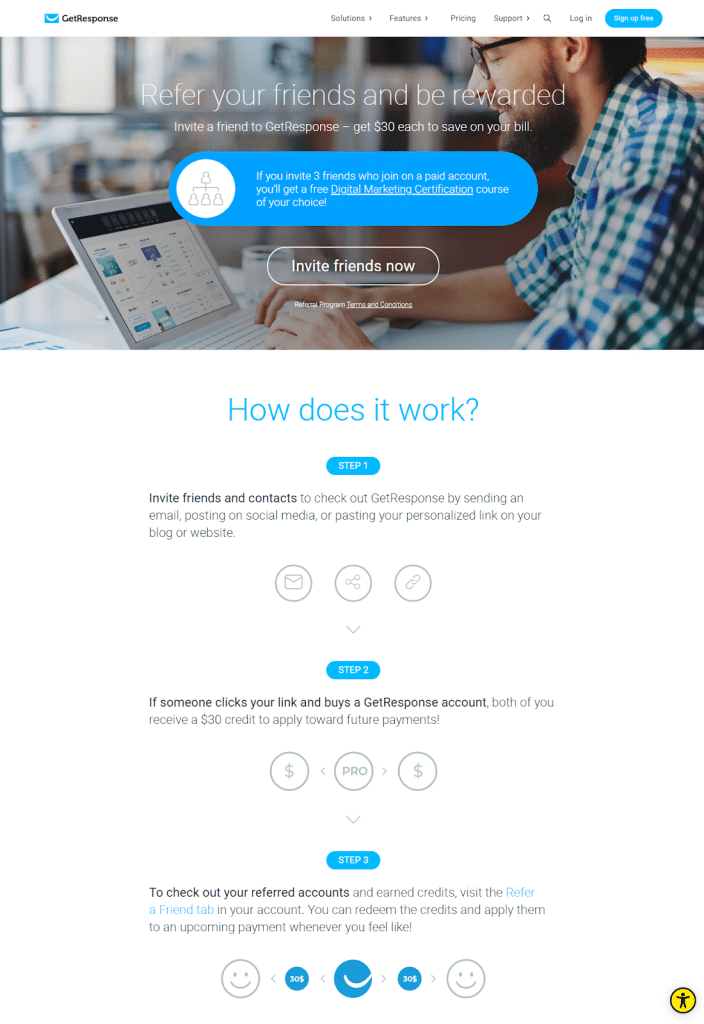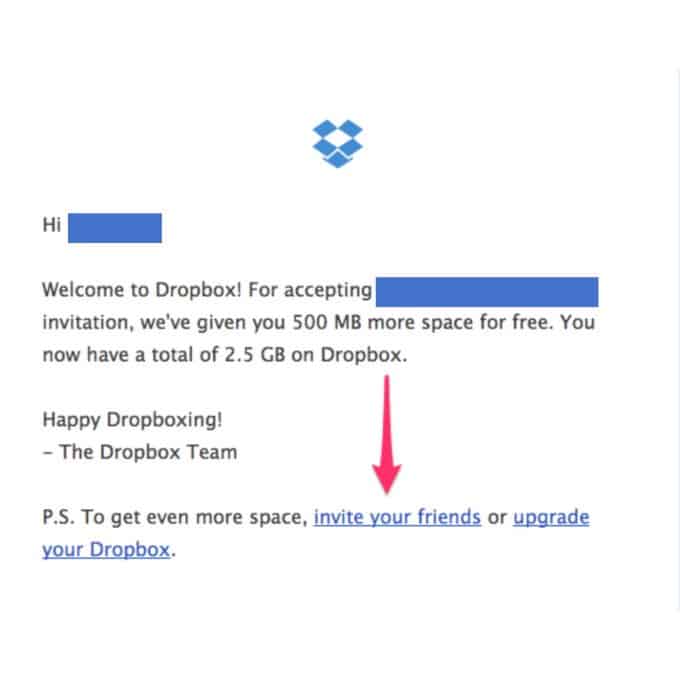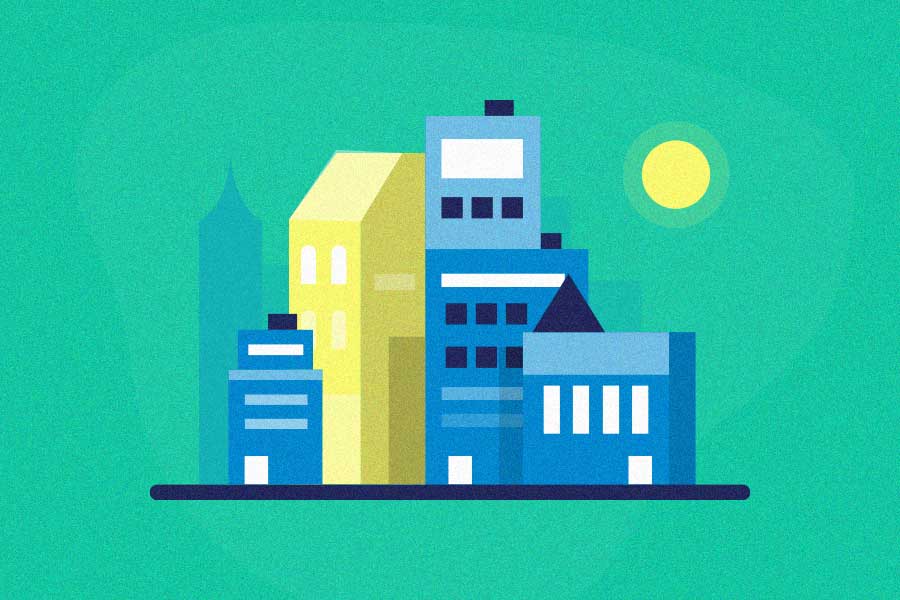When you’re trying to choose the next new dinner spot to try, what brand of sneakers you should buy for working out, or what software will best help your business solve a problem, how do you decide?
Chances are, you seek the recommendation of a friend, family member, or colleague.
Recommendations from customers are one of the most effective forms of marketing, because people trust their peers. And customers don’t just share with anyone: they bring in good-fit leads who are more likely to purchase from you.
Referral programs reward customers for recommending your business to their peers by giving them an incentive once a referred friend makes their first purchase. These programs are a powerful marketing channel, as they drive more recommendations, turn current customers into advocates and bring in a steady, high-quality stream of new customers.
Ready to amp up your referrals and scale your business? Here’s your ultimate guide to starting a referral program that works, including:
What is a referral program?
A referral program (refer-a-friend program) is a marketing strategy that motivates your existing customers to tell their friends, family and colleagues about your brand, products, or services.
Within a referral program, the existing customer usually earns a reward (such as a gift card, a discount, store credits, free products, or swag) whenever someone they refer makes their first purchase. This incentive is promoted front and center.
Customers receive referral links to share with their network, so the business can easily track referral sharing and send rewards. This helps businesses pinpoint their biggest brand fans, as well as track the exact source of their new customers.
Why do you need a referral program?
Referral programs generate leads and sales through the power of trust. When a potential customer is in need of a product or service, they’re most likely going to ask a friend or family member for a recommendation first. After all, as Nielsen reports, 84% of consumers trust referrals from friends and family more than any other source of information about a brand. And thanks to the benefits they offer customers, referral programs create an engine that reliably encourages these recommendations – meaning more leads and sales for you.
Also, referral programs track the referrals that customers make. Without a tracking element, it’s hard to know the impact of recommendations. But thanks to a referral program, word-of-mouth marketing becomes measurable.
Benefits of referral programs
A customer referral program can benefit businesses of any size, in any industry. Here are four of the main benefits that come from starting your own referral program:
✅ Standardizes the sharing process
If your business offers exceptional products and services, customers will be happy to refer you to others. However, even your happiest customers might not always remember to spread the word about your business.
This is where referral program software can help. A referral program standardizes the way you invite and reward customers for sharing your brand with others. By offering a formal referral program – with clear and attractive rewards – you can increase the odds of your business getting word of mouth.
A formalized program also makes it easy for customers to share your brand, thanks to a dedicated referral page and messaging. Implementing a referral program will turn your happy customers into reliable advocates!
✅ Brings in only the best-fit leads
The main goal of a referral program is to attract new customers who are a good fit for your brand. Since their reputation is on the line, customers will only recommend your product to friends when they know these friends will benefit from what you offer.
Referral marketing leads are already warm because they trust their peers’ recommendations. So, referred leads are more likely to make a purchase, and more likely to align with your ideal customer profile.
✅ Attracts new customers at a very low cost
Referral programs encourage your current customers to spread the word about your business with the promise of a reward. But how much does a referral program cost? Not as much as you may expect.
The cost of referral rewards is fixed (per referral), and these incentives are only paid for performance (aka when the referral converts to a customer). The result is a much lower customer acquisition cost (CAC) compared to most types of advertising.
✅ Brings in high-quality customers
Referred customers have a higher retention rate than other customers, and are proven to bring more value to your business. They are proven to spend 25% more, and are 37% more likely to make a repeat purchase. They also have a 16% higher customer lifetime value than customers who were not referred.
And perhaps most strikingly, referred customers are three times more likely to refer someone else, meaning there’s a high chance they’ll keep the cycle of referrals going and bring you even more top-tier customers.
✅ Has a proven track record of success
Many popular businesses have seen success thanks to a strong customer referral program.
- PayPal’s famous referral program literally gave away money. The company started out by offering $20 to start an account, and another $20 to refer their friends (this number decreased through the years). As one of the first notable referral programs, it helped PayPal achieve 7–10% daily growth and a user base of over 100 million.
- Dropbox also offered a referral program that was greatly inspired by PayPal. It led to a 60% increase in user signups, with over 2.8 million referrals taking place in the first 18 months. Even today, 35% of all signups come from the company’s referral program.
- Uber’s referral program achieved an estimated 12x ROI, thanks to its valuable rewards and how easy it was to use.
- A leading German bank offered €25 ($28) for every successful referral. The results? Its referred customers generated 16% greater profits and were 18% more likely to stay with the bank.
Unfortunately, even with all of these benefits, not enough companies are taking advantage of referral programs. A study shows 71% of startups don’t have a referral marketing program in place.
If you don’t want to miss out, we can help get a customer referral program up and running for your business in just a few steps.
How does a referral program work?
Referrals have proven to be one of the most valuable forms of marketing. Not only do most of us look to others for product and service recommendations, these recommendations come with a high level of trust.
Research reveals that 75% of customers are more likely to make a purchase if their friends refer them.
It makes sense. The friends were once in your existing customers’ shoes and looking for a similar solution. If an existing customer is telling them how great a product is, they’re more likely to give it a try.
Plus, referral programs have the potential to create a never-ending cycle of word-of-mouth marketing (sometimes called a viral loop). One referral leads to two, three, and so on. All from a single customer.
It’s easy to see how recommendations have changed the way consumers shop these days. And if your business is going to adapt to these changes, it needs a strong customer referral program strategy.
How to create a referral program / refer a friend program
Now that you understand how referrals and referral programs help a business, it’s time to start building one of your own. But where do you begin? Here’s what you’ll need to do to create a referral program that delivers the best return on investment:

Step 1: Lay the foundations for success
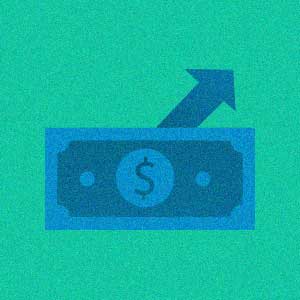
Step 2: Choose your referral program rewards

Step 3: Design a program that converts

Step 4: Make your promotion plan
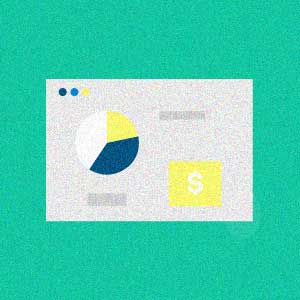
Step 5: Utilize referral program software tools

Get inspired with referral program examples
Step 1: Lay the foundations for success
The success of a referral program lies in having a solid referral system – one built on exceptional products, strong customer relationships, and a clear marketing goal. Having these foundations in place before you launch your program is key.
A. Provide exceptional products
Providing exceptional products and services is the first step to creating a referral program. If your offering doesn’t stand out and make an impact, people won’t remember to refer you to others – no matter how great your referral program.
“Believe it or not, I built my entire business through word-of-mouth referrals,” says Ritika Puri, Founder of Storyhackers, a Silicon Valley-based marketing firm, in an interview with Grasshopper.
But Ritika didn’t get these clients because she’s lucky – she got referrals because she does amazing work. “I genuinely love getting to know my clients and love to make them 200% happy,” she says. “I am very passionate about (and completely believe in) the work that my clients are doing. This passion guides me toward amazing projects and people.”
Whether you run a marketing firm or another type of business, you can learn from Ritika. It’s important to be passionate about offering exceptional products and services. Otherwise, even the best customer referral program may never take off.
Ask yourself: Do customers genuinely like my products/services? Am I already getting organic word of mouth? Do people leave positive reviews or send me positive feedback?
B. Put your customers first
A referral program is nothing without your customers. If you’re planning to launch a program, it’s important to develop your customer experience and relationships first.
And like all good relationships, communication is key. Take the time to have conversations with your customers. Listen to them and respond sincerely. After all, these customers are similar to the ones you’ll be targeting in your referral program, so consider them as your direct line to understanding the market.
At the end of the day, if you put effort into providing a positive experience through your brand, customers will be happy to share.
C. Know your ideal customers
Since referral programs are a customer acquisition strategy, it’s important to understand the types of customers you want to attract through the program. These customers should be similar to the existing customers who will make referrals. How will you best motivate these new customers to sign on, and get existing customers to share with people in the right demographics?
D. Have a clear marketing goal for your program
While the first three points covered generally good business practices, this final one focuses on how to set up a referral program. Why are you creating a referral program? Aside from more sales, is there anything else you hope to get out of it?
A few other goals can include:
- Boost customer loyalty (increase customer retention by XX%)
- Build brand awareness (increase website traffic by XX%)
- Drive customer acquisition (increase leads from referrals by XX%)
No matter why you want to start a referral program, it’s important to identify these goals. This allows you to measure how the program is doing, and see whether you’re actually hitting your targets.
Step 2: Choose your referral program rewards
Now that you’ve covered the basics, it’s time to figure out how you’ll motivate your customers to participate in your program. What will make a customer spend their time and effort to refer others? Aside from offering great products and exceptional customer service, a reward incentive (sometimes called a referral bonus) can be the nudge they need to send others your way.
Don’t skip the incentive, as that mistake will make it difficult to get anyone to participate in your program. Even if your business and product are well-loved, a lack of incentive can make your referral program less attractive. When it comes to any business transaction, people usually take a “what’s in it for me” attitude. So, be sure to offer a well-chosen reward that makes referring worth it.
Learn how to avoid other common reward mistakes by checking out this video:
“Consumers don’t just simply use a product and recommend it to friends and family members. They want to know what is in it for them. We overcame this challenge by providing customers with incentives when referring someone to our brand – discount coupons that can be redeemed on our website. Individuals are eligible for increased discounts with every member they refer to our brand. It helps create a strong customer base.”
– Erin Neumann, Soxy (As told to us in our B2B social proof roundup)
A. Determine who will get the referral rewards
The first question to answer when designing your referral rewards program is who will receive the reward. Will you offer incentives to the existing customer (the referrer/advocate), the new customer (the friend/lead), or both?
We highly recommend rewarding both the referrer and friend – here’s why:
Rewarding both the existing customer and their friend usually creates the highest engagement. Your existing customers get a reward, so they’re motivated to make more referrals. And they don’t feel like they’re recommending you for purely selfish reasons, as they’re also helping out their peers.
And by also offering a reward for the friend, you’re encouraging them to become a new customer and make their first purchase. How’s that for sweetening the deal?
The reward can be the same for both parties (“Give $20, Get $20”) or different (“Give $15 to your friends, and get a free product in return”).
If you choose to reward only your existing customer, this can make the reward seem self-serving. Potential referrers will be reluctant to “sell out” their friend’s information just to get a reward of their own. And even if they do share, the referred friend won’t be very motivated to purchase right away – leaving both parties (and your business) still without a sale.
Lots of referral programs make the mistake of skipping the friend reward. Don’t fall into that trap! The program below would be better if the friend got a credit too.
If you’re stuck about what to offer the friend, and you already offer new leads something for free (like a free demo or consultation), you can always use that as a friend reward.
And if you only reward the friend, there’s a good chance that reward will lead to a sale. But you might not see as many referrals. After all, referrers don’t stand to receive anything from the share, so there’s no main driver behind the share.
B. Consider what reward to offer
Just as every business is different, every referral incentive will be too. Find out what type of referral reward will work best by considering what your customers value most. For example, a snack food brand can offer a free sample or discount for every successful referral, and a cloud storage platform can offer free storage space.
Here are some questions to help you determine your referral reward:
- Who are my current customers? What type of reward would they most enjoy?
- Do the referral rewards make sense for my brand and business?
- Will I offer monetary or non-monetary rewards?
Cash rewards naturally tend to be the most enticing and eye-catching. But they aren’t the only ways to incentivize your customers. In fact, studies suggest customers may be even happier receiving gifts as opposed to straight cash. With a little creativity, you’ll find there are many types of reward incentives:
- Discounts/coupons
- Store credit or points
- Service upgrades or freebies
- Free products
- Free month subscription
- Branded swag
- External gift cards (i.e., Amazon, Apple, Visa)
- Donations to charity
- Tangible referral gifts
There are many ways to reward your customers for their referrals. Just make sure the reward incentive you choose is one where they see the most benefit.
You’ll need to consider how your buying process is structured when selecting a reward.
For instance, if you’re an apparel or cosmetics brand (or any brand where people purchase often) you might offer store credit to referrers. This way, customers can use the credit on their next purchase, and they’ll be motivated to buy again soon.
But this reward won’t make sense if you’re a business where purchases are infrequent, like a car dealership, mattress company, or home renovation company. For brands like these, cash and external gift cards (and possibly large, tangible gifts) make more sense as referral rewards.
C. Decide on a reward structure
The final piece of the referral puzzle is setting up your reward structure. When and how will you give customers their reward? Below, we go over the most popular options:
Standard reward structure
This is the simplest of all structures. You offer the same reward for every successful referral (i.e., $20 store credit) and automatically reward your customer as soon as their referred friend makes a purchase.
A standard reward structure doesn’t require you to keep close track of a customer’s referrals, but it could lose its motivating factor in time.
Tiered reward structure
This offers different levels of referral reward incentives, usually based on the number of referrals. For example, a referring customer may earn $10 for the first three referrals, and then $20 for every succeeding referral.
Or, you could offer different products, or swag items, that increase in value as customers hit certain referral goals (like The Hustle does).
Alternatively, you can also start with a bigger reward for the first referral, and then smaller rewards for each subsequent referral. This option might work if your budget is more limited.
Multi-step or staged reward structure
This breaks down the entire referral process into steps, and rewards customers for each step they accomplish.
For example, a customer might earn:
- $25 when a referral schedules a consultation or demo
- $100 when the referral pays their invoice
This structure works best for B2B businesses, as well as others with longer sales processes (say, infrequent expensive services, such as landscaping).
Referral drawing
In a referral drawing structure, customers earn an entry into a random drawing for a bigger-ticket prize in exchange for their referrals. One referral equals one entry. So, the more referrals someone makes, the greater their odds of having their name pulled.
Regardless of the outcome, though, every successful referrer earns a smaller set reward for every referral, just like in most referral programs. (Usually, this is store credit or a free product.) This way, there’s always an immediate motivation for customers to share.
Gamified reward structure
A gamified reward structure (sometimes called a referral contest) awards an extra, high-value reward to a customer who makes the most successful referrals in a certain time period. This is a great way to ramp up brand advocacy by appealing to customers’ competitive sides.
Gamified structures and referral contests are a great way to add excitement to your referral program (especially for certain seasons). So, consider starting one of these friendly competitions.
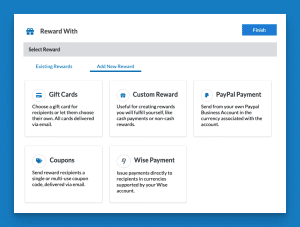
Step 3: Design a referral program that converts
Once you’ve decided on your rewards, the next step is designing your referral program. The look and feel of your campaign can say a lot about your business and the way it interacts with customers. After all, these referrals may be the first time someone comes across your business.
Keep your referral program messaging clear and easy to understand, and make sure the elements – the way your program looks, feels, and sounds – are in line with your business.
A. Use catchy headlines
Before you can get a customer’s referral, you need to get their attention. This is true for every type of marketing. But when it comes to customer referral programs, headlines are a key player in attracting your customers to join.
A good headline should provide the gist of the program in a single sentence. It should also share what the referral program is about and explain the benefits of joining. Here are a few examples of headlines that work:
- “Give $20, Get $20”
- “Refer a friend and get $15”
- “Spread the word and get free socks for life”
- “Your friends deserve better water. You deserve $100.” (Culligan Water)
B. Make it easy for people to refer
The best referral programs make it easy for customers to share your brand with others. If a customer has to jump through hoops just to send a referral, they’ll likely give up early in the game. Give customers a way to refer their friends in as few clicks or taps as possible.
And when you’re explaining how the program works, cover:
- The rewards on offer
- What needs to happen for rewards to be earned
Be as concise as possible – get to the point so the sharing can begin. Summing things up in a three-step process (like DigitalOcean did above) is especially effective.
If there’s anything extra that needs to be explained, set up a separate referral program FAQ.
C. Provide multiple sharing options
One key way to make sharing easy? Give your customers a few different ways to share (i.e., social media, email, text message) and you increase the likelihood of them actually sharing. It’s best to choose the options that align with how your customers naturally share exciting things with friends. Referral software makes this easy!
Include a one-click referral link so customers can simply copy and paste the link to share in whatever way works for them.
In the example below, clothing retailer American Apparel sent an email to their subscribers, encouraging them to share the brand with their friends. In exchange, they offered 20% off for both the subscriber and their friend. But American Apparel’s referral success wasn’t just because of its enticing offer – it was how easy it was to refer a friend.
With a convenient referral widget, the company allowed subscribers to share the coupon via email, Facebook, Twitter, or a direct link. It even pre-filled the referral message box (more on this below) so subscribers didn’t have to do a thing, aside from making a few simple clicks.
D. Use a bold call to action (CTA)
The referral call to action is the powerhouse of any strong referral program page. This is the button customers click to move forward in the referral process, and make the share. So, make sure it’s eye-catching, in a color that stands out from the rest of the page. It also needs to say what you want the customer to do next in just a few words: “Share now,” “Invite friends,” or “Get [type of reward]” are great examples.
E. Create your referral messaging
On top of sharing options, having the right referral messaging is also important. Referral messaging is the text your customer will send to their friend.
A pre-filled, ready-to-send message makes it even easier for customers to share your business with their friends. In fact, using established referral program templates often tends to bring better results.
That being said, it’s good to give customers the option to edit the existing message or add a few lines of their own.
While your customer already knows about your business, their friend might not. The referral message might be their first point of contact with you, and should cover a few things in your referral message template:
- Explain the referral benefits at the very start
- Give a clear call to action (what the next step is)
- Keep everything easy to understand
- Make it personal (it should feel like it’s coming from the customer, and be addressed to their friend by name)
F. Make sure referred friends will feel like VIPs
Have you considered what the friend experiences after they click on the share message? It’s crucial for them to have a positive first impression of your brand.
Directing referrals to generic pages, such as your homepage or a standard landing page, can create a disjointed experience. When the message doesn’t align with what was shared, friends may feel overlooked, which can lead to a negative first impression. This ultimately results in fewer conversions from referrals.
Instead, aim to provide the friend with a tailored referral page that highlights the advantages of your brand, presents the referral offer, and features a clear call to action.
You could implement a simple pop-up to inform friends that they’ve received an exclusive offer from their peer, which has already been applied to their cart. Strive for smooth transitions and ensure that directions and information are straightforward. And even better, mention their peer’s name as the person who gifted the VIP reward.
G. Optimize your program for mobile
Many customers naturally share things they love with their friends using their phones. So, it makes sense to make your referral program mobile-friendly, so it’s easier for customers to share with friends no matter where they are.
Just like with any referral experience, make sure that your referral program experience is simple and uncluttered. Explain things super concisely, and ensure that customers can refer friends in just a few taps. Place the call to action in a place that customers don’t need to scroll, and make it bold and bright. These steps are even more important on mobile apps and mobile briowsers, due to the smaller screen size and the fact that customers have more distractions when on their phones.
H. Implement analytics and tracking
The best referral programs always do a little bit of testing: What words resonate with your customers? What type of reward will draw them in? You may find what works well for other customer referral programs might not work as well for you.
To see success in your referral program, it’s important to implement an analytics and tracking system.
This is where the right referral program software comes in handy – these tools come with built-in analytics, referral link distribution, referral tracking, and more. You can monitor when a customer refers others, whether the referral results in a sale, and other key metrics in your referral marketing campaign.
Referral program software can help you understand what is working for your business, as well as any areas that need some improvement. With this information, you can fine-tune your referral program to meet your unique business needs.
Tip: Referral Rock lets you track every point of the referral program lifecycle: awareness, shares, reach, and converted referrals, for the fullest possible picture of your program’s success.
- Awareness: How many potential sharers sign up for and visit your program?
- Shares: How many people actually share?
- Reach: How many referred friends click on the shared message? (Signature Referral Rock metric)
- Referrals: How many referred friends actually convert?
Step 4: Make your promotion plan
You won’t see conversions if your customers have no idea that your program exists. Neglecting the promotional piece is one of the most common reasons a referral program fails. So, plan out how you’ll promote your referral program before you launch. That way, your hard work won’t go to waste!
A. Determine who you will ask for referrals first
It’s best to promote your program to your most loyal customers first, even before it launches fully. This includes connecting with customers who have purchased from you the most, have remained with you the longest, have given you glowing feedback, or who have even already referred friends to your business before an incentive was on offer.
Also, if people have recently left unprompted positive reviews or social comments, they’re also the perfect people to invite to your referral program. They’re willing to recommend you publicly, so why not ask them to directly recommend you to friends (and earn rewards in the process)?
Send these customers personalized emails, thank them for their loyalty and support, and give them VIP access to your program before you launch to your entire customer base.
B. Figure out how you’ll tell all customers about the program
After you’ve shared your program with key players, how will you let all customers know about your referral program?
Here are some of our favorite promotion strategies:
- Actively ask for referrals from all of your customers by sending a dedicated program email.
- Talk about your program in other emails, such as your newsletters and update emails. One or two sentences is all you need.
- Post about your program on social media.
- Include a form that asks for referrals on your thank-you pages, in post-purchase pop-ups, or in transactional emails sent right after a purchase.
- Put your homepage, top menu, and bottom menu to work by adding eye-catching links to your referral program page.
- If you meet clients in person, give out referral business cards. Include a QR code to bring offline interest online.
- Include a link to your program in email signatures and social bios.
C. Keep the promotion going, well after launch
Remember, though, that promotion needs to be ongoing for the best results. So plan out how you’ll keep promoting your program, both at the launch and after. People forget things. Making your program discoverable and consistently reminding people it’s there is essential, because today’s world is full of distractions.
The best way to do this is to send a monthly or quarterly reminder email about the program, to all your customers. But regular promos in your other emails, quarterly social posts, and continued homepage or menu promos are also good strategies.
Step 4: Use referral program software tools
There are a number of software providers that make it easy to set up a referral program (and complete Steps 2 and 3 above).
Referral marketing software offers tools dedicated to streamlining customer referrals and increasing word of mouth for your brand. This software makes it easy to track every referral back to the person who made it, and instantly issue referral rewards to customers once they’re earned. Using software to build your referral program from the get-go comes with the added benefit of having a customer support team to help you along the way.
Keep in mind that not all customer incentive programs are alike. Affiliate programs or loyalty programs are also useful in growing customers, but these are not the same as referral programs. Make sure the software you select is designed for tracking customer referrals.
Referral Rock is referral software custom-built to help all businesses (not just ecommerce!) design, track, and manage referrals on an easy-to-use platform.
It has advanced reward management and lets you embed sharing links across your customer lifecycle so your program is set up for success. Plus, thanks to integrations, it works seamlessly with CRMs like HubSpot or Salesforce, or ecommerce platforms like Shopify or BigCommerce.
7 best referral program examples to inspire your own
When starting your own customer referral program, it helps to see some examples where other brands have had success.
Keep in mind that customer referral program structures will usually look different based on industry. A B2B referral program, run by a business with a long and multi-step sales process, will look very different from a simple B2C ecommerce referral program.
What is the best referral program? Here are seven of the most effective referral program examples to inspire you:
- Harry’s
- Omsom
- Stitch Fix
- Morning Brew
- Grasshopper
- GetResponse
- Dropbox
Referral program example 1: Harry’s
Using a referral program to create awareness before a launch
Sometimes, referral programs are the catalyst that makes a brand a household name. For example, Harry’s offered a referral program before they even launched. The company’s co-founder and co-CEO, Jeff Raider, described the process on the Four-Hour Work Week blog:
“First, users entered their email addresses on a splash page. This first step was essential since we wanted to capture emails both for our list and so that we could use it as an identifier for tracking referrals.
“The second page was where the referral mechanisms lived. It contained a shareable link to the splash page coded specifically to the user. Below the link were buttons to share the link through email, Facebook, and Twitter with the click of a mouse. By sharing the link with friends, users had the opportunity to earn free product. The more friends who signed up using your unique referral link, the bigger the prize you earned.”
The tiered referral program worked wonders for Harry’s. In one week, they were able to gather almost 100,000 email addresses. Today, Harry’s owns the German factory that makes its blades, and its products can be found in top retailers across the country. With the right messaging and execution, the brand’s referral marketing program has greatly contributed to the brand’s overall marketing strategy.
Referral program example 2: Omsom
Catching advocates’ and friends’ attention with an enticing headline, images, and reward
Omsom, a brand specializing in flavorful starter packets for at-home Asian dishes, knows how to spice things up with their referral marketing program.
Their headline “Give a starter, get a starter” (complete with a super eye-catching fire emoji), and their hero image of delicious foods someone could make with Omsom starters, draw customers in and encourage them to refer friends. The bold colors of the program page stay consistent with the rest of the company’s branding, and also keep the customer’s eyes glued to the page.
And of course, there’s the enticing double-sided reward of a free Omsom starter packet, for both the advocate and the referred lead (a $5 value.) Who doesn’t love getting something for free – and giving a free gift to a friend at the same time?
We also have to highlight one of Omsom’s early referral program emails. This shares the same fiery headline as the referral landing page, thanks customers for making the brand a success, and then invites customers to “share the Omsom love,” appealing to the desire to help a friend. Like the landing page, this referral email draws customers in and gets straight to the point!
And Omsom doesn’t stop there. The email advocates send to referred friends clearly introduces the new lead to the benefits of Omsom in its messaging (“Fire up restaurant-quality Asian dishes in under 30 minutes with our starters – pantry shortcuts for specific Asian dishes…”).
It also highlights specific Omsom best-sellers, with mouthwatering hero shots, that the friend might want to try using their free $5 reward.
Plus, it includes the bold colors, flavorful images, and fun emojis consistent in all parts of the referral program. Omsom has fired up word-of-mouth marketing with this red-hot referral program!
Referral program example 3: Stitch Fix
Using a referral program to encourage sharing positive experiences
Stitch Fix is a subscription service that uses technology to recommend personal styling and clothing items based on size, budget, and style. The company, which was founded in 2011, is now valued at $300 million and continues to grow. Part of their secret sauce is a referral program.
Stitch Fix capitalizes on customer happiness, encouraging customers to share their positive experiences in exchange for a reward. Each customer gets a unique referral link to forward to their friends, and for each one who signs up, the customer gets $25 in Stitch Fix credit. The more friends they refer, the more credit they get.
The referral program helped Stitch Fix spread like wildfire, especially on social media sites like Facebook. A satisfied customer base throughout the country shares their unique referral link with their Facebook friends, in hopes of getting their friends to sign up and increasing their Stitch Fix credit.
Referral program example 4: Morning Brew
Mobilizing viral sharing with tiered and gamified rewards
Morning Brew is a popular marketing newsletter that has found viral growth through the power of referrals. Each Morning Brew subscriber can earn tiered rewards as more and more friends they refer subscribe to the newsletter themselves.
Available rewards include virtual event access, branded swag like Morning Brew mugs, t-shirts and pint glasses, and even a complete work from home makeover for super-advocates who successfully share with 1000 friends. These rewards motivate lots of sharing at a relatively low cost on Morning Brew’s end, which is vital since Morning Brew is a free newsletter.
It’s super easy to share “the Brew” in multiple ways (via email, social media, and a referral link), and the tracker that highlights how many referrals needed for the next incentive is extra motivating. Plus, subscribers can write their own message when they share for a personal touch (or save time with a pre-written message, if they choose).
The newsletter referral program also includes a famous contest element in their referral program to drive even more word-of mouth – flash MacBook pro giveaways. If a subscriber successfully refers a friend during the contest, both earn an entry into the high-end laptop giveaway.
Morning Brew’s investment in referrals has paid off in spades. Nearly a third of Morning Brew’s core subscriber base was referred to the newsletter by their friends. Plus, thanks to their referral program, they grew their subscriber base from 100,000 to 1.5 million subscribers in just 18 months!
Referral program example 5: Grasshopper
Fostering community through its ‘Refer an Entrepreneur’ referral program
Grasshopper is a virtual phone system marketed to entrepreneurs and small business owners, rather than general consumers. To capture its target audience, the company built a referral program called “Refer an Entrepreneur.”
In Grasshopper’s referral program, both the referring customer and the new customer get $25 credit each. This double-sided incentive motivates existing customers to spread the word within their network, as well as new customers to take advantage of the special discount. This encourages high conversion rates on both ends (for referrals made and newly referred customers signing up).
Referral program example 6: GetResponse
Fostering repeated B2B referrals with a unique, high-value reward
GetResponse provides another stellar example of a B2B referral program. The company makes referring easy with streamlined instructions on their referral landing page. And every time a successful referral is made, the company awards both the referring advocate and the new customer with a $30 GetResponse credit.
But that’s not the biggest standout feature of this successful referral program setup. For every three successful referrals a brand advocate makes, they earn the opportunity to take one of GetResponse’s Digital Marketing Certification courses for free. The courses, valued at nearly $200, are the perfect VIP referral incentive for the marketers GetResponse is targeting through the referral program. This unique, top-tier reward that only GetResponse can provide is an ideal way to encourage multiple B2B referrals.
Referral program example 7: Dropbox
Pioneering the referral program structure and integrating it into the product experience
We briefly talked about it earlier, but no “best referral programs” list is complete without Dropbox’s powerhouse referral program. As one of the first major referral programs, the Dropbox program helped the brand grow by 3900% in 15 months. And it is still going strong today, with 35% of all signups coming from the Dropbox referral program.
So, what does the Dropbox referral program nail that you can steal for your own program? Dropbox opens things up with a strong headline that advertises the referral reward (including how much total space a referrer can potentially get for free – everyone loves free stuff). And the double-sided referral program means both the referring customer and the new user stand to benefit.
It’s super easy to enter friends’ email addresses, or to copy a unique referral link and share with friends any way you choose. The real gem, though? Dropbox presents the referral program at the end of their onboarding process. It’s like they’re saying, “Thanks for signing up for Dropbox! Like what you’ve seen? Here’s a way to get more Dropbox space for free!” Users are often convinced to share because the product experience is so amazing, with an easy onboarding process.
Plus, once referrals are made, Dropbox doesn’t leave referrers hanging. Instead, it’s super easy for them to check the status of their referrals from a portal.
And what happens on the friend’s end? The friend receives an email notifying them that they were given 500MB of free space. But that email also invites them to share Dropbox with their own friends, in order to earn more space for themselves. That’s how to start a cycle of repeated sharing!
What are the different types of referral programs?
A customer referral program is the most popular type of referral program, and is the one we’ve focused on in this article. This program encourages all of your customers to share your brand with friends.
Sometimes, though, businesses will run customer ambassador programs. Often, these programs are the exact same as customer referral programs, just with a different name. But in some cases, customers must go through some sort of formalized training, or meet other requirements, before they can make referrals as ambassadors. Other times, a business will hand select some of its best customers to be ambassadors, and limit the program to these VIPs. Many ambassadors will use social media to promote a brand and direct their followers to your website via their referral link.
A referral partner program is another type of referral program. Referral partners sign a contract to partner with you and go through a partnership training. Then, they refer individuals or businesses they have an existing relationship with, and earn commissions on the sales they help make.
Yet another type of referral program is an employee referral program, where you encourage employees to share your business with the people they know in exchange for rewards.
How to start a referral program that works for you
Referrals can come from anywhere – a happy customer, a friend or family member, or an influencer in your industry. The key is to harness these referrals using a well-designed program that incentivizes word of mouth and builds customer loyalty.
When learning how to start a referral program, it’s important to have a base of happy customers and understand what rewards will best incentivize them to share. For the best functionality, use referral software to make the process as easy as possible using shareable referral codes and automations. These allow you to track referral campaigns, automate payouts (if you want!), and make use of analytics to create the best referral program for your business.
Referral marketing programs can take your business to the next level, bringing new customers directly to your door. Whether you’re a small business owner, marketer, or customer engagement specialist, starting a referral program can be relatively low effort, low cost (compared to other channels), and high reward!
Learn more about how Referral Rock can help >
Looking for more info on starting a referral program? Check out these resources:

